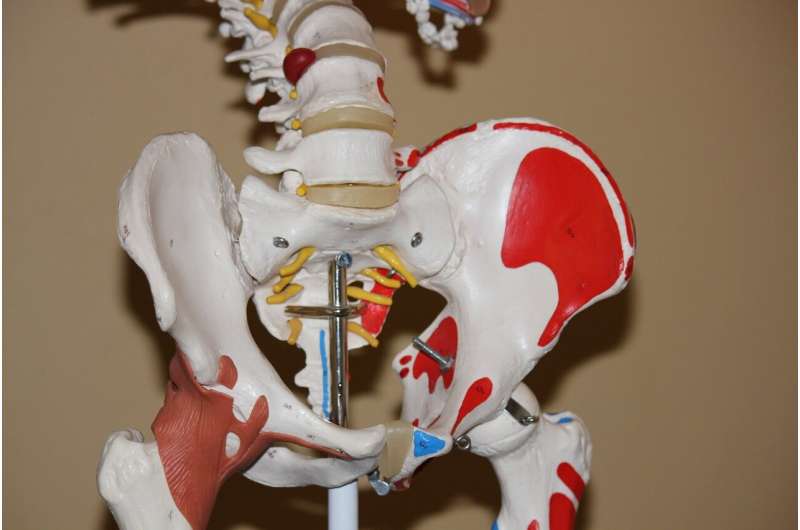This article has been reviewed according to Science X's editorial process and policies. Editors have highlighted the following attributes while ensuring the content's credibility:
fact-checked
peer-reviewed publication
trusted source
proofread
Hip muscle exercises could help amputees improve functional mobility

Strengthening hip muscles could be key to improve mobility in people with a below-the-knee amputation, new research has shown.
Amputation presents significant mobility challenges to millions of people worldwide. Studies show that only 5 percent of people fitted with a prosthetic limb use it for more than half of their waking hours. These lower levels of activity lead to muscle wasting, or atrophy, in the remaining part of the leg.
A study by researchers at the University of Birmingham and Imperial College London has shown that the knee extensor muscles, just above the knee, are particularly at risk of atrophy because of the natural inclination to protect the soft tissue around the amputation site.
The team identified muscles around the hips, called hip abductors, which could be strengthened to provide effective compensation for weaknesses in the knee extensor muscles. They tested their hypothesis in amputees across three activities essential for independent living: walking, getting up out of a chair, and climbing stairs.
Dr. Ziyun Ding, of the University of Birmingham, led the research. She said, "Even with a prosthesis, there will be reduced mobility in the amputated limb. People will also use their sound limb more, and try to protect the soft tissue at the amputation site. All these factors combine to reduce muscle volume in the amputated limb. In addition, putting additional load on the intact limb can lead to further problems like osteoarthritis.
"It's inevitable that people with an amputation will try to protect those soft tissue areas, but the hip abductor muscle, a major muscle in the leg, is not part of the stump knee interface. By strengthening this muscle, the leg will work better, without overloading the knee extensor muscle."
In the study, the team worked with a group of eight military personnel who had had a lower limb amputation after being injured in combat. Those taking part in the study were at least 12 months post-operation and had had their prosthesis for at least six months.
The researchers took high resolution MRI measurements to get an accurate picture of how the muscle volume in the amputated limb had changed. They also captured motion data from the three activities. In addition, researchers used computational modeling to understand the internal loading, such as muscle force and bone on bone contact, which cannot be measured using imaging techniques.
Through these techniques, the team was able to get a clear picture of the biomechanics involved in each activity. This led them to identify the hip abductor muscle as key to improving functional mobility by working to strengthen it post amputation. This could be via targeted exercise activities, or through electrical stimulation, using techniques similar to those already employed for stroke patients.
The study is published in the Journal of Biomechanics.
More information: Ziyun Ding et al, The effect of muscle atrophy in people with unilateral transtibial amputation for three activities: Gait alone does not tell the whole story, Journal of Biomechanics (2023). DOI: 10.1016/j.jbiomech.2023.111484





















